Trek's new Domane is lighter, simpler, and racier than ever
And it's joined by the return of the race-ready Domane RSL
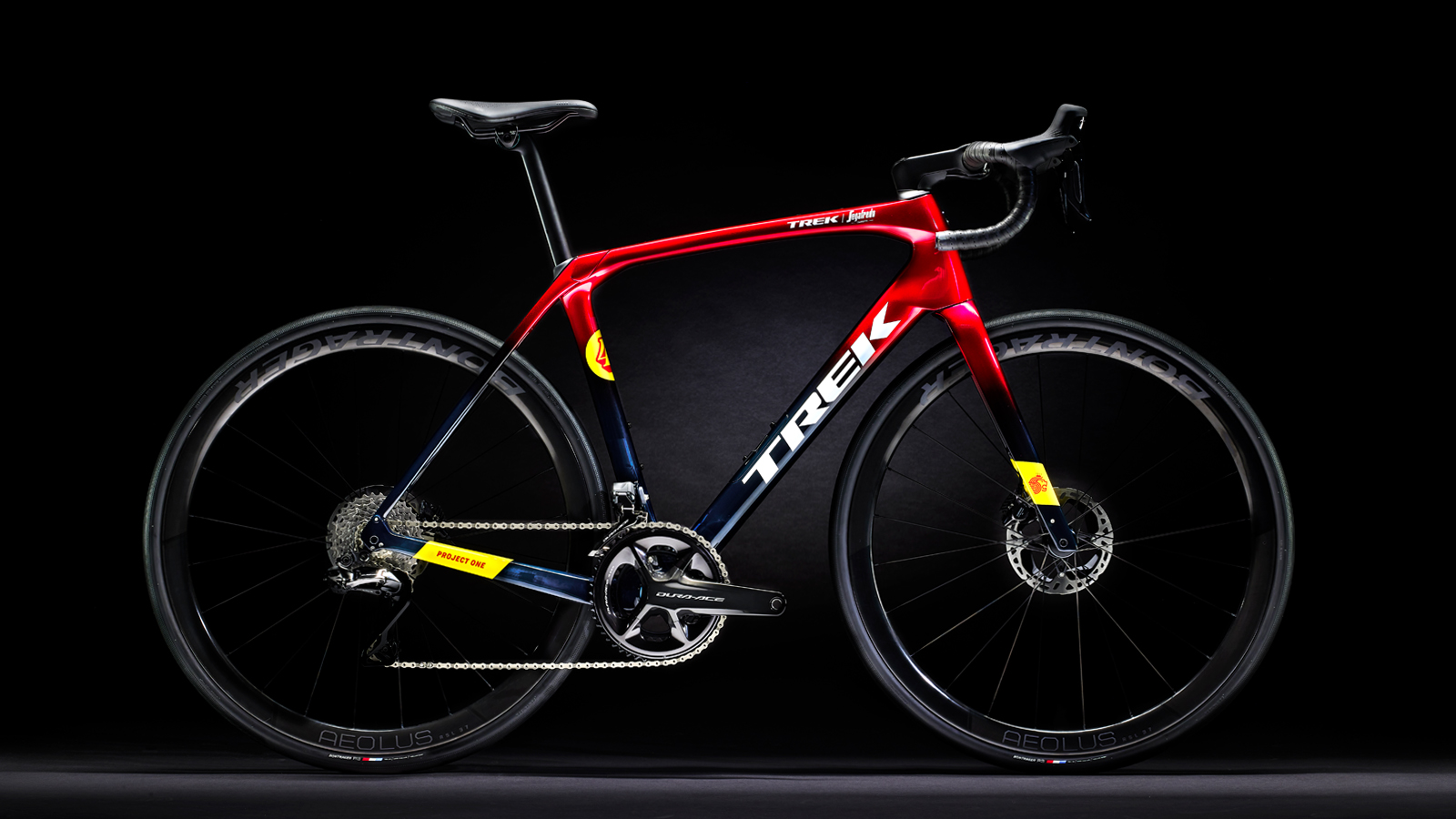
It's been an open secret for what seems like forever, but today, 145 days after it was ridden to Paris-Roubaix victory by Elisa Longo Borghini in April, the covers are finally being lifted off the all-new 2023 Trek Domane.
It marks Trek's second major road bike launch in the space of three months, and it includes the mid-tier Domane SL, the top-tier Domane SLR, as well as the return of the race-ready limited edition Domane RSL (Race Shop Limited).
Unlike Trek's other recent launch, which saw the all-aero Madone given some frankly wild design ideas (it had a hole in the seat tube), the new Domane appears to have gone in the opposite direction, favouring simplicity and weight savings instead of its usual tact of ride-smoothing technology.
Domane's new direction
Ever since its inception, the Trek Domane has used IsoSpeed decouplers to smooth out the road and boost compliance. The original Domane, launched in 2013, introduced the technology and had an IsoSpeed decoupler integrated into the seatpost cluster, allowing the seatpost to flex independently from the frame.
Each iteration since has expanded upon this technology. The second generation, launched in 2017, made it adjustable while adding a second IsoSpeed to the front. In 2020 for the third generation, the technology was refined and remained a core part of the bike's identity.
Fast forward to today's launch of the fourth generation, and it appears that Trek has taken an altogether different approach. The front IsoSpeed decoupler has been removed entirely, and while it does remain at the rear, the newly refined iteration is much simpler, and no longer adjustable.
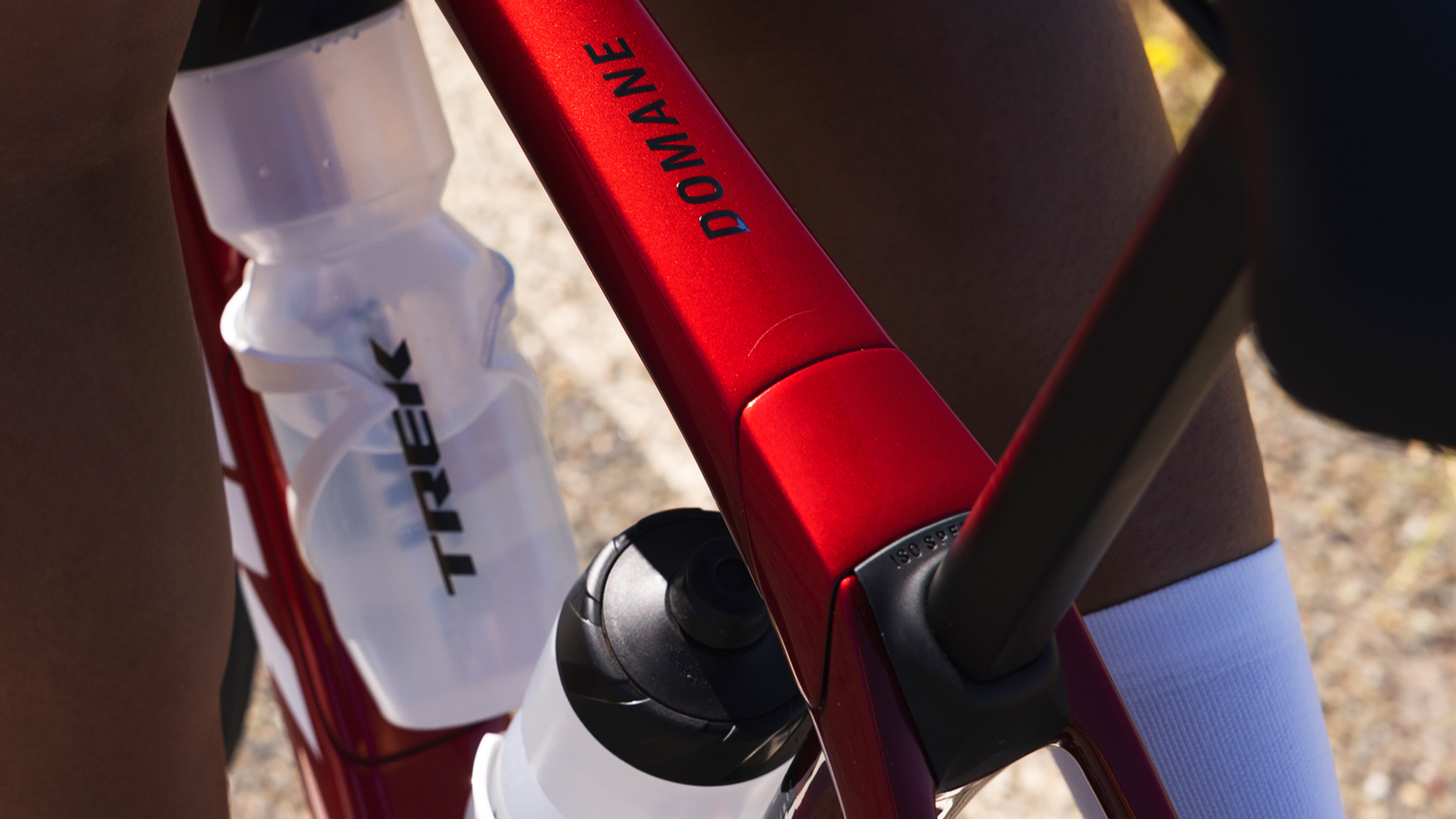
Thanks to the removed decoupler, as well as an upgrade to Trek's latest 800 Series OCLV carbon, the new Domane is said to be the lightest ever, more than 300g lighter than its predecessor.
Get The Leadout Newsletter
The latest race content, interviews, features, reviews and expert buying guides, direct to your inbox!
The 800 Series OCLV carbon fibre layup was first introduced in 2020 with the Emonda SLR and recently applied to the Madone. It will feature on the Domane SLR – an improvement from the 700 Series found on the current model – as well as the RSL. The Domane SL will retain the 500 Series carbon that features on the current model.
The new approach from Trek continues through the development of the frame's tube shapes, which have been given an aerodynamic overhaul as the Domane gets racier than ever. Updated kammtail tubing has been applied throughout the frame, and a more conventional D-shaped seatpost replaces the two-part mast-and-seatpost system found on the outgoing model.
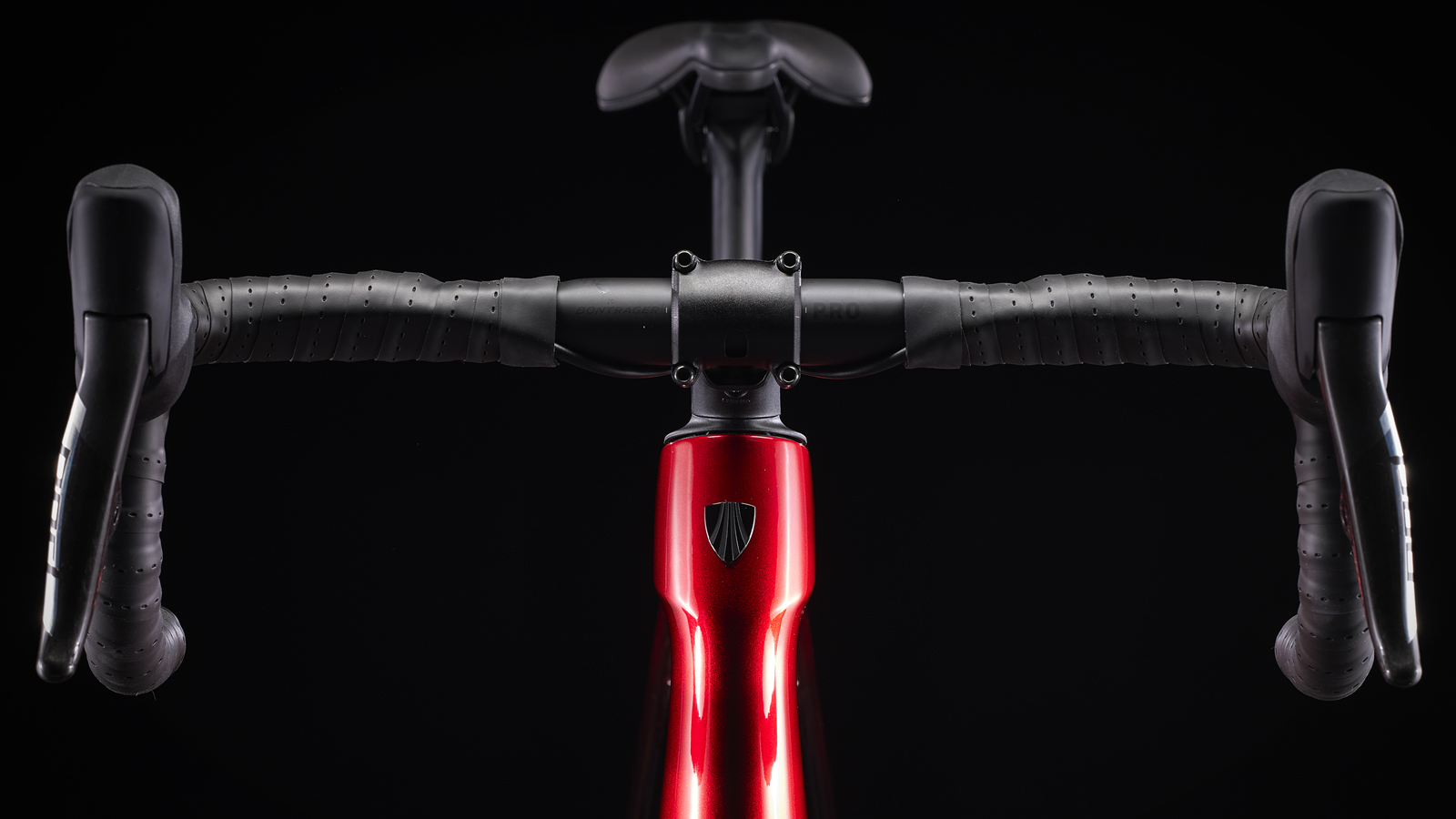
Up front, a refined two-piece cockpit sees cabled integrated beneath the stem and into the top of the head tube, rather than through the top tube as per the outgoing model. The new cockpit might appear similar in design to the one found on the new Madone, but differences in cable routing from the stem to the frame mean that unfortunately, the new, narrower cockpit is not compatible here.
Trek hasn't made any specific aerodynamic claims for the Domane, but these updates alongside the reintroduction of the Domane RSL (last seen in 2017) point to a renewed focus on race performance for the Domane, rather than the bump-smoothing Rolls Royce Phantom of before.
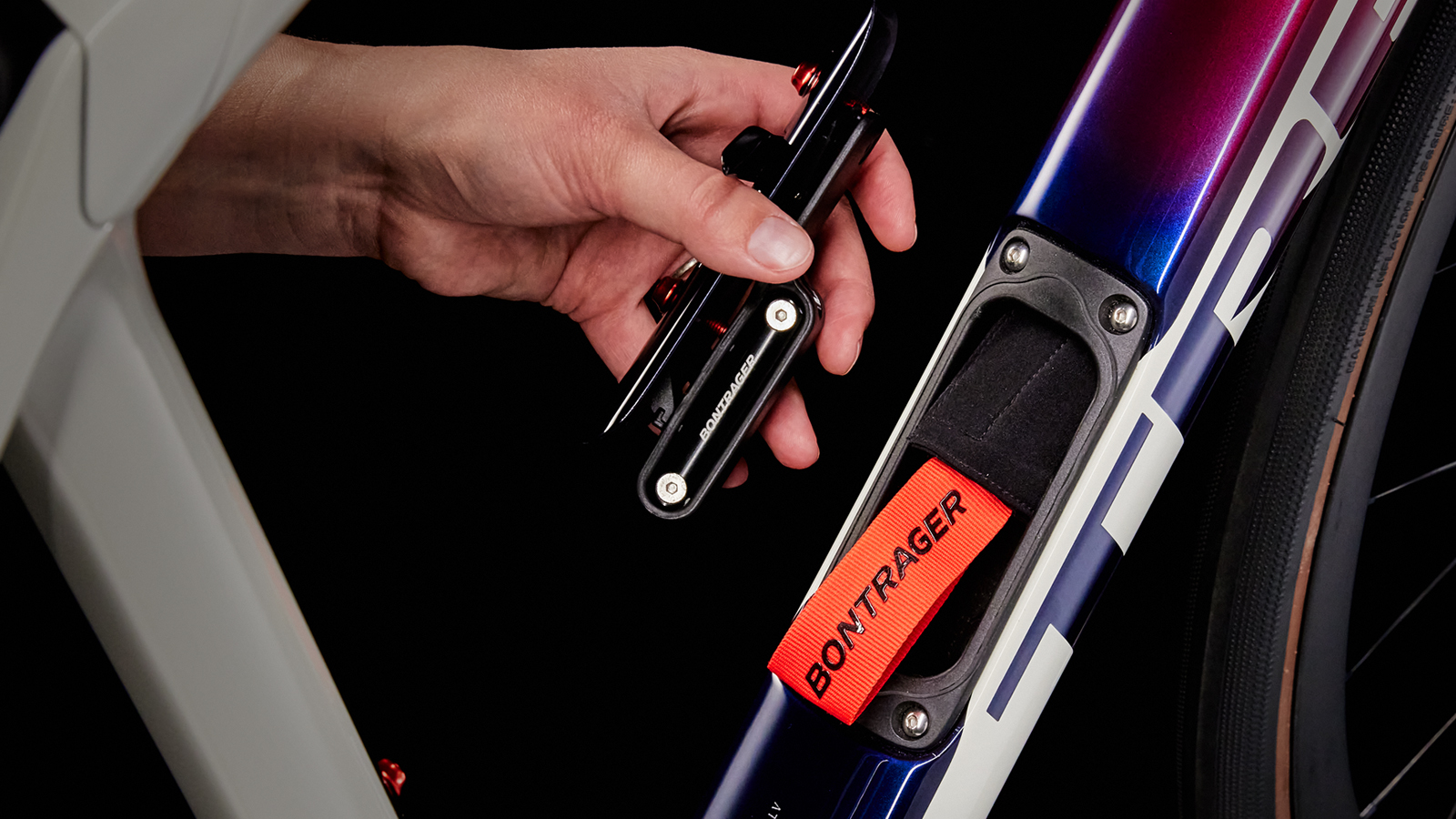
Versatility remains
It's not all about racing though. Well, it is if you opt for the RSL, but we'll go into that in more detail later. The SLR and SL models both retain considerable attention to versatility. That comes in various forms, including the storage compartment that lives within the down tube, the hidden mudguard mounts that adorn the fork and rear triangle, and the new mounting point on the top tube for a small bag, allowing neat integration of extra storage on longer rides.
These two models also retain the ability to handle 38mm tyres, although, with mudguard fitted, this does drop to a still-ample 35mm of space. They also continue to use Trek's 'H2' geometry, aimed at endurance riding with a taller head tube and shorter reach than an equivalent size Madone or Emonda.
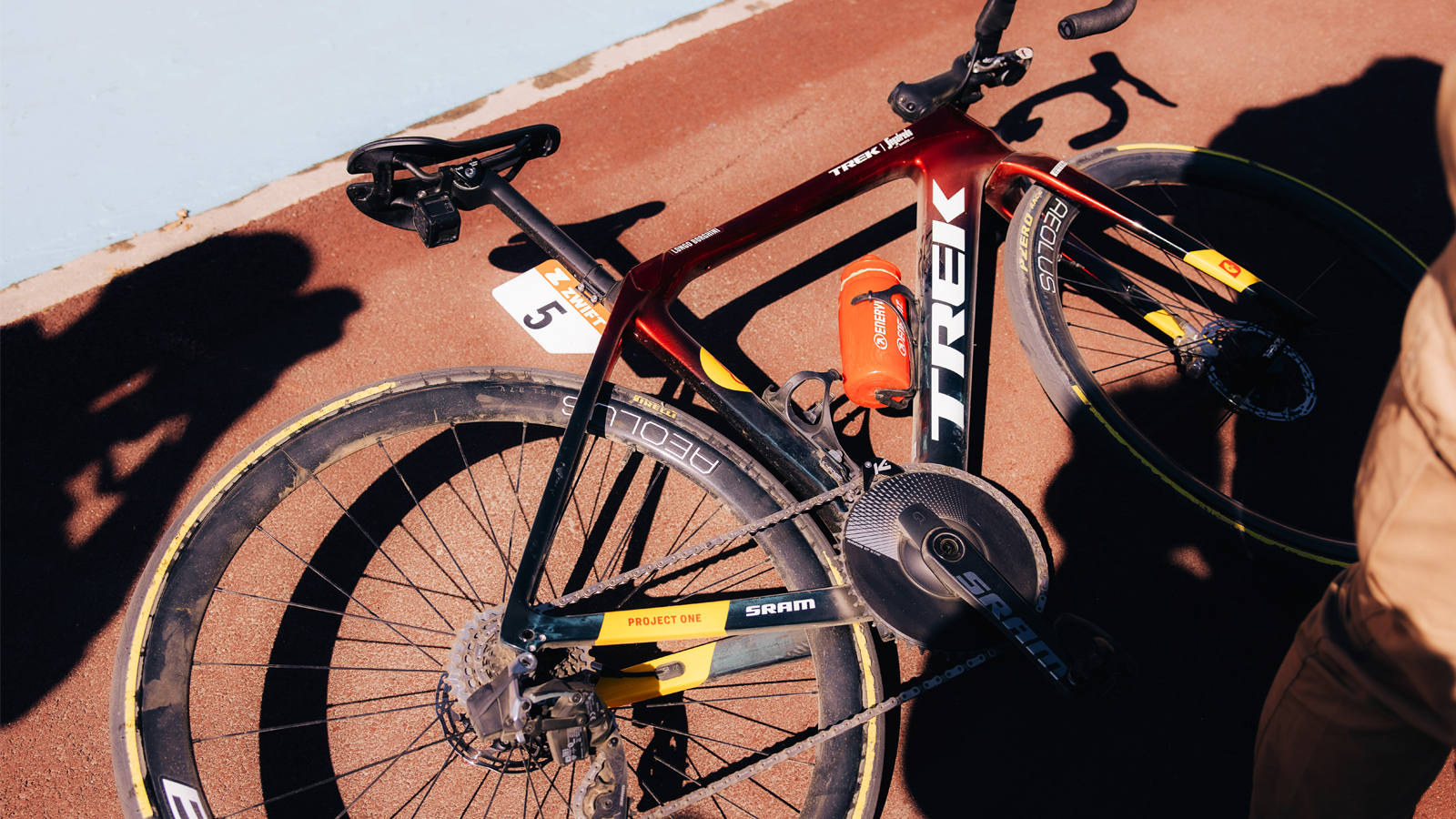
RSL returns
As mentioned, the latest launch sees the return of the RSL [Trek's highest level 'Race Shop Limited' tier of bikes and components], which was previously seen in the second generation Domane, and is the model that was ridden to 1st and 3rd at Paris Roubaix Femmes. If you do choose the Domane RSL, you'll be getting a bike that's arguably closer to the latest Emonda than the outgoing Domane.
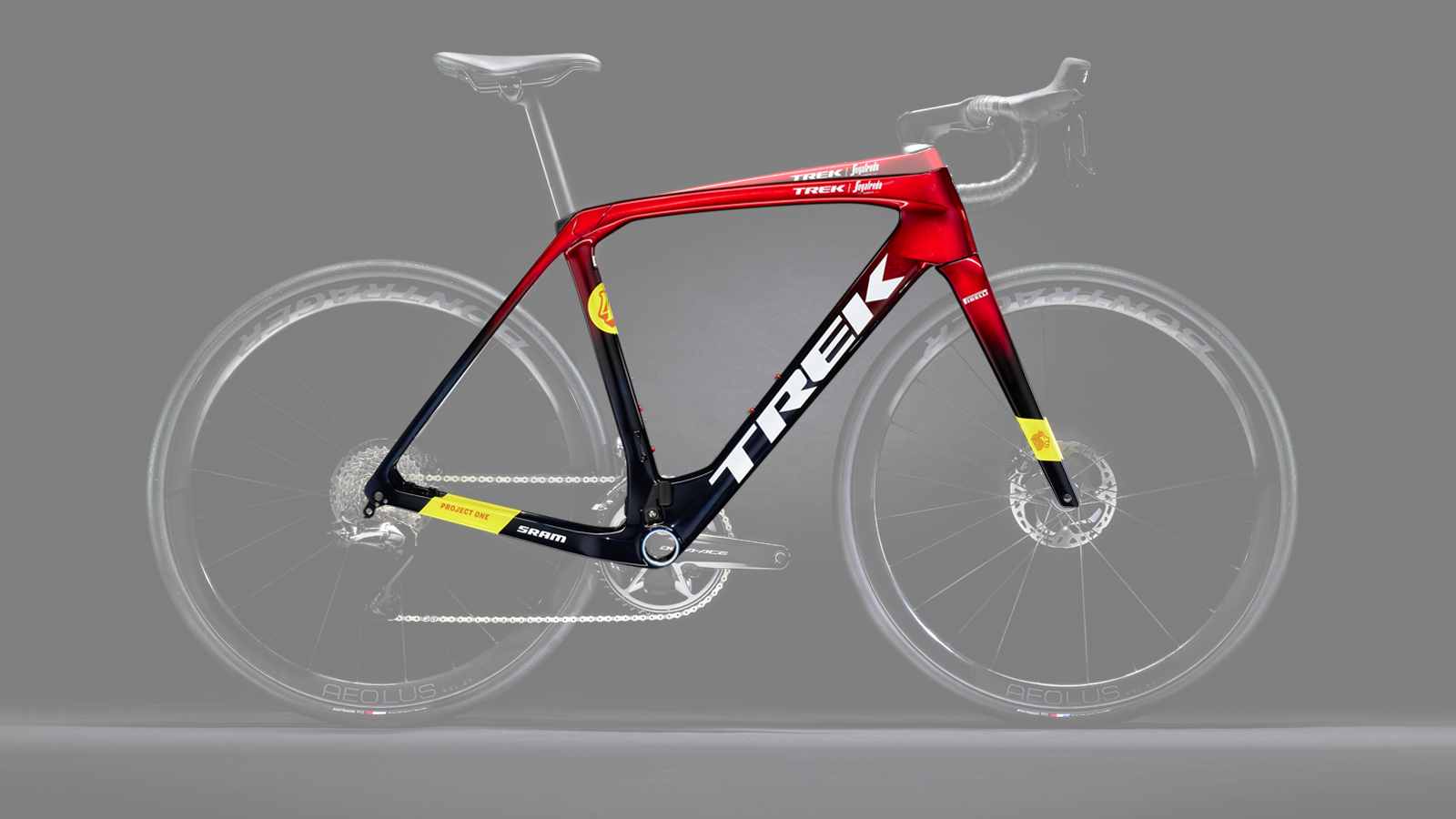
Most notably, that means a switch to Trek's more aggressive H1.5 geometry, which matches that of the Emonda and Madone. We've highlighted the difference in the image above. But that's not all that's different, the RSL also eschews the downtube storage compartment in a move that saves 100 grams on the frame alone. The hidden mudguard mounts are also gone, and the 38mm tyre clearance shrinks to 35mm due to adjusted frame shapes which also result in a reduction in weight.
Interestingly, the SLR and SL models are limited to a maximum chainset size of 52/36T (or 50T when running 1x), whereas the RSL can handle chainsets up to 54/40T and 54T single rings.
Compatibility and frame specs
On the subject of limitations, all new Domane models can be used with mechanical groupsets, with full cable housing - they're not limited to electronic drivetrains like the Madone - but they do see a limitation with certain front derailleurs. Notably, because the frame does not have a front derailleur housing stop, it is only compatible with derailleurs that have this built-in. This includes Shimano, but excludes SRAM.
Home mechanics can rejoice as Trek is continuing to spec threaded T47 bottom brackets, in a move that follows the trend that actually began with the previous Domane launch back in 2019.
Tubeless fans can also rejoice - as well as fans of things just being kept simple - as each and every model from the new Domane range will be shipped with tubeless-ready wheels (at different spec points based on price, of course) set up as such, complete with tubeless valve and sealant preinstalled and ready to ride.
Trek Domane 2023 builds and pricing
| Model | Weight | Groupset | Wheels | Price |
|---|---|---|---|---|
| SL 5 | 8.93 kg / 19.69 lbs | Shimano 105 R7020 mechanical | Bontrager Paradigm SL | $3499.99 / £3300 / €3499 / AU$4999.99 |
| SL 6 | 8.90 kg / 19.63 lbs | Shimano 105 R7170 Di2 | Bontrager Paradigm Comp 25 | $4699.99 / £4400 / €4999 / AU$6499.99 |
| SL 6 eTap | 8.89 kg / 19.61 lbs | SRAM Rival eTap AXS | Bontrager Paradigm Comp 25 | $5299.99 / £4800 / €5299 / AU$6499.99 |
| SL 7 | 8.26 kg / 18.22 lbs | Shimano Ultegra R8170 Di2 | Bontrager Aeolus Pro 37 | $6829.99 / £6400 / €6999 / AU$N/A |
| SL 7 eTap | 8.48 kg / 18.7 lbs | SRAM Force eTap AXS | Bontrager Aeolus Pro 37 | $7499.99 / £7250 / €7699 / AU$9499.99 |
| SL Frameset | 2.50 kg / 5.52 lbs | N/A | N/A | $2499.99 / £2700 / €2999 / AU$N/A |
| SLR 6 | 8.26 kg / 18.21 lbs | Shimano 105 R7170 Di2 | Bontrager Aeolus Pro 37 | $7999.99 / £7000 / €7499 / AU$10999.99 |
| SLR 6 eTap | 8.25 kg / 18.19 lbs | SRAM Rival eTap AXS | Bontrager Aeolus Pro 37 | $8399.99 / £7500 / €7999 / AU$11599.99 |
| SLR 7 | 7.89 kg / 17.41 lbs | Shimano Ultegra R8170 Di2 | Bontrager Aeolus Pro 37 | $8549.99 / £9000 / €9999 / AU$12299.99 |
| SLR 7 eTap | 8.38 kg / 18.48 lbs | SRAM Force eTap AXS | Bontrager Aeolus Pro 37 | $9699.99 / £9500 / €10499 / AU$13199.99 |
| SLR 9 | 7.25 kg / 15.98 lbs | Shimano Dura-Ace R9270 Di2 | Bontrager Aeolus RSL 37 | $12749.99 / £12000 / €12999 / AU$16999.99 |
| SLR 9 eTap | 7.80 kg / 17.20 lbs | SRAM Red eTap AXS | Bontrager Aeolus RSL 37 | $13199.99 / £12500 / €13999 / AU$17499.99 |
| SLR Frameset | TBC | N/A | N/A | $4199.99 / £4500 / €4999 / AU$N/A |
| RSL Frameset | 1.60 kg / 3.53 lbs | N/A | N/A | $4199.99 / £4500 / €4999 / AU$5600 |
| Row 14 - Cell 0 | Row 14 - Cell 1 | Row 14 - Cell 2 | Row 14 - Cell 3 | Row 14 - Cell 4 |

Josh is Associate Editor of Cyclingnews – leading our content on the best bikes, kit and the latest breaking tech stories from the pro peloton. He has been with us since the summer of 2019 and throughout that time he's covered everything from buyer's guides and deals to the latest tech news and reviews.
On the bike, Josh has been riding and racing for over 15 years. He started out racing cross country in his teens back when 26-inch wheels and triple chainsets were still mainstream, but he found favour in road racing in his early 20s, racing at a local and national level for Somerset-based Team Tor 2000. These days he rides indoors for convenience and fitness, and outdoors for fun on road, gravel, 'cross and cross-country bikes, the latter usually with his two dogs in tow.